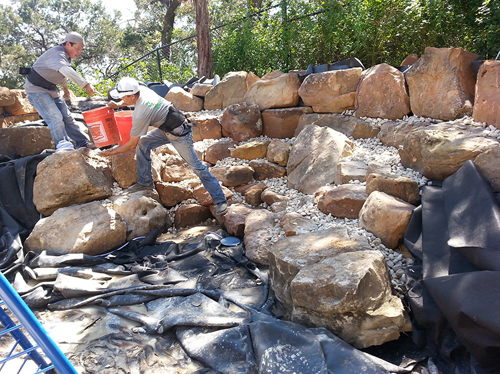
As pond builders, we sometimes take on a job just because we’ve seen it done before. And sometimes, it turns out to be almost more than we can handle. Such was the case with this large pond project we completed last year in Austin, Texas.
We didn’t have to call in any help, and we didn’t lose money — which was a great thing in the end. We also learned more from the time spent on this single project than we had from all the hours of training that we had previously undergone. So, all in all, it came out great! The owner is happy, the pond is beautiful, and we now have a showpiece pond that highlights our skills to people in our area.
We started with a blank slate — a large, empty yard with a pronounced slope that led to a drop-off. We had to start by building a retaining wall, allowing us to build the low side higher while digging farther into the slope on the high side. For some reason, the water surface in all of our ponds tends to be level, so we had to tame this slope in order to also achieve the 5-foot depth that the owner wanted.
After the wall was completed, I was ready to start digging…but I noticed that if I dug any deeper, I wouldn’t be able to reach the upper slope to install the large retaining wall boulders. This pond was right up against the neighbor’s fence, so access was extremely limited — impossible from that end, and equally daunting from behind the rock retaining wall that we had just built. There was only one way in and one way out. We were going to have to work in reverse, mixing up the normal order of the steps that we usually follow to build ponds and backing our way out a few feet at a time.
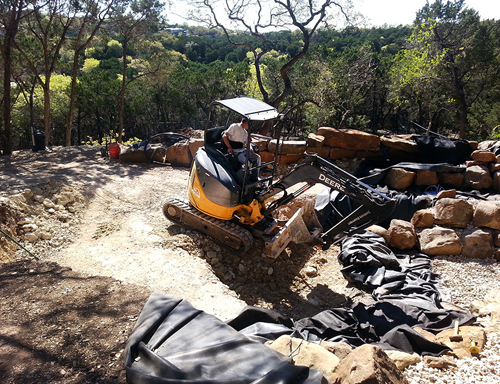
The pond consisted of two levels. The top level was even with the original grade in front of the retaining wall. The second level was about two and a half feet lower. I started by carving out the rest of the top level, making it even all the way around.
As I dug, my foreman, Mando, removed the dirt with our stand-up skid steer. We then excavated the deeper level about halfway across this 30-by-35-foot pond. Tired of digging, I was ready to sling some rock and allow a pond to take shape in this moonscape we had been working on for a couple of weeks. There were only three of us working, and the liner roll weighed more than 800 pounds, so getting it into the hole was a lesson in itself. We spread it out over the whole excavation area to make sure it would fit, and then we had to bundle it all back up and push it to the side of the pond nearest the neighbor’s fence. We had to create this pond in 5-foot increments, or the excavator wouldn’t be able to reach out and place all the boulders without tipping over.
After the first couple of sections went in, it was starting to look like a pond. We couldn’t get any other machines into the area, so all the gravel would have to be installed using Home Depot buckets. (Luckily for me, I was the machine operator!) As an added distraction, there was nowhere to dump all the gravel we needed for this job, so we had to haul it in one yard at a time in pickup trucks. We completed each 5-by-5-foot section, turning around the excavator to continue digging the lower level while still leaving a ramp to get out. After we installed rock pads and big boulders, the guys would then install the smaller rocks around them and gravel the rest.
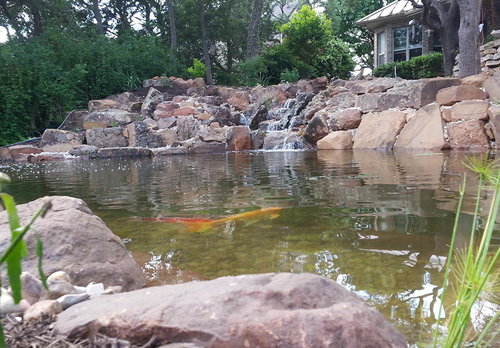
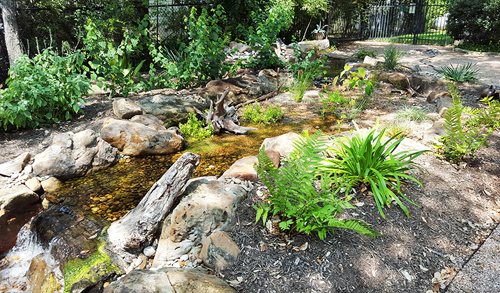
[box]The finished pond and waterfalls and out of the bog and over the log. [/box]
We finally finished the pond and backed our way up the hillside to work on the waterfall and stream area. We knew we could never again get the excavator into the pond area, so everything had to be perfect. The main waterfall combined the flow from a BioFalls Filter with the flow from the adjacent stream to create one large waterfall. Once the falls were finished, we began working our way backward up the stream as the pond began filling. Disguised as part of the stream would be an 8-by-16-foot, partially raised bog filter. While we were excavating this area, we finally hit the large slabs of limestone that Austin is famous for. However, the excavator managed to pry them loose, and soon afterward, the bog and stream were complete. All that was left was the upper waterfall, which would empty into a small pool.
This pond features two skimmers — one for the underwater jets and the lower waterfall, and the other for the bog and upper waterfall. With the pond full, we were able to turn on the first pump as we completed the upper waterfall section. Someone had recently contacted me about getting rid of his large koi, so we stocked the pond with nine of them, in addition to a large turtle. We planted the bog and then turned on the second pump. The jets at the lowest level push water away from the skimmers. We installed an aerator in the bottom of the pond opposite the skimmers, causing a rising water column. The skimmers then pull the surface toward them. Thus, the pond is constantly turning over, mixing freshly filtered, oxygenated water into the lowest levels, while effectively skimming the surface.
To this day, the original fish have never been fed, and there are hundreds of babies. The water is still clear all the way to the bottom.
Another balanced-ecosystem pond in the books!




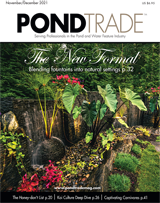
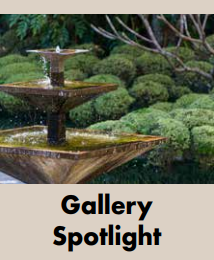

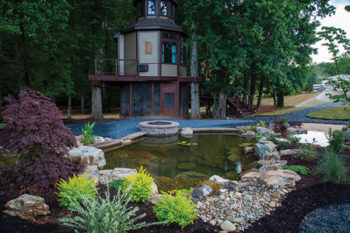
Nice job pulling off a difficult installation in great style! beautiful project.